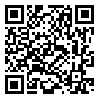Volume 6, Issue 24 (2013)
LCQ 2013, 6(24): 31-62 |
Back to browse issues page
Abstract: (8607 Views)
Government correspondences and related works (books, letter-writing called Tarassol) are the most important historical documents. The accuracy of authors and amanuenses in representation of the status and the definition of the relations between social agents (public and governing apparatus), made these books function of the cultural and semantic system of its time. These texts draw consciously a kind of “unequal encounter”, so that they are suitable to study the elements of power representation in discourse. This study is based on the four discursive components: nomination, transitivity system, function of different sentences models, and modality and provides insights into the power relations. The results show that the above mentioned factors have an efficient role in the discourse of Dastur-al-katib and indicate the reciprocal role of the author in representation of the power relations. Religion and “Sharia”, as two sources of power, buttress this reciprocal discourse and at the same time had led to the emergence of hegemony in the text.
Keywords: amanuensis language, Dastur-al-katib fi Taåyin-al-maratib, power relations, discourse analysis
Article Type: practical |
Subject:
stylistics
Received: 2013/01/21 | Accepted: 2013/10/5 | Published: 2013/12/22
Received: 2013/01/21 | Accepted: 2013/10/5 | Published: 2013/12/22
| Rights and permissions | |
 |
This work is licensed under a Creative Commons Attribution-NonCommercial 4.0 International License. |



